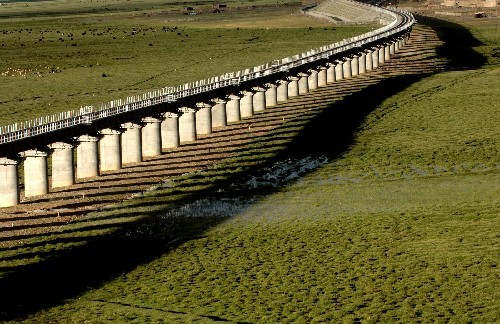The high-speed railway line network of China is soon to reach the Qinghai-Tibet Plateau, as a new railway line is set to start operating next month in the Qinghai Province, according to the China Railway Construction Corporation.
The new railway line's train cars can run at a speed of 200-250 kilometers per hour on the Qinghai-Tibet Plateau. It will significantly cut the travel time between Lanzhou, the capital of Gansu, and Xining, the capital of Qinghai, down to just one hour.
Once the railway starts to operate, trains can travel from Xining to Xinjiang Uyghur capital Urumqi in just seven hours.
Chief engineer Chao Yang from the railway corporation said that the high-speed trains will cross past a 4,200-meter mountain tunnel. The new railway line will also pass through broad areas in the Gobi Desert and long spans of windy areas experiencing frequent gales.
Chao said that the new high-speed railway line is a sign that China is a proven expert in constructing and running high-speed railway lines located in high-altitude areas with extremely low temperatures.
According to a report from China.org, the average oxygen content in the Qinghai-Tibet air is only 50 to 60 percent of what is in lowland areas. The high-altitude places are dubbed as the "forbidden zone" for humans because of the small percentage of oxygen content and dangerous sandstorms.
Railway workers had to carry a 5-kilogram oxygen cylinder to provide sufficient oxygen when working inside the mountain tunnels.
The new high-speed railway lines are aimed at increasing the growth of tourism, trade and mining within the Qinghai-Tibet Plateau.



























